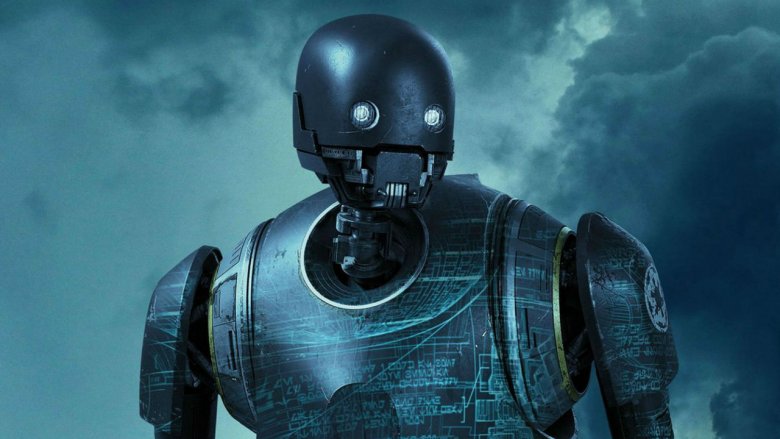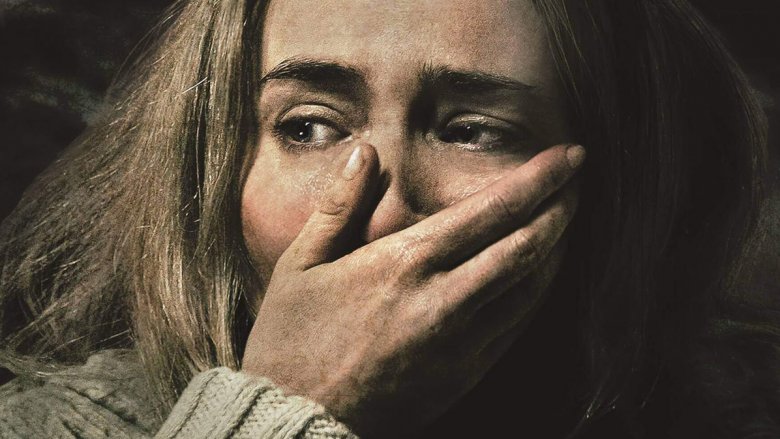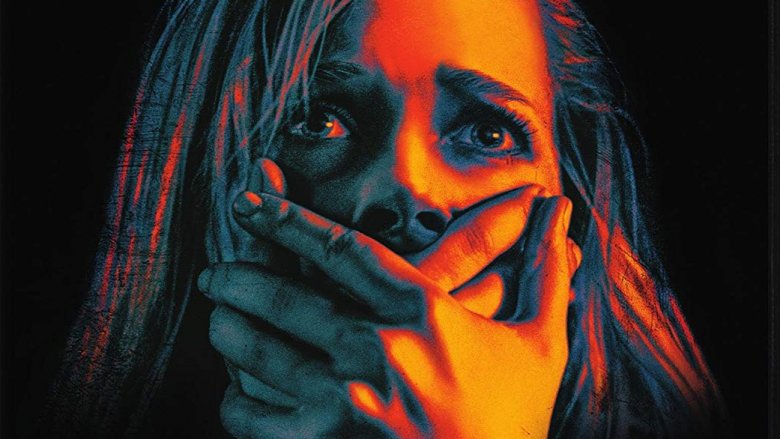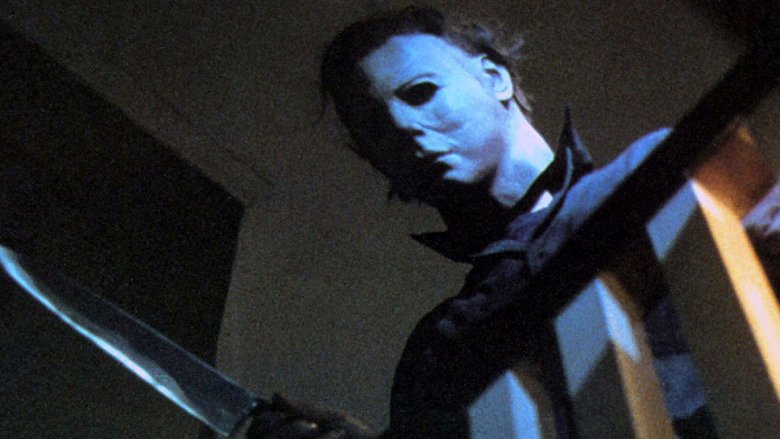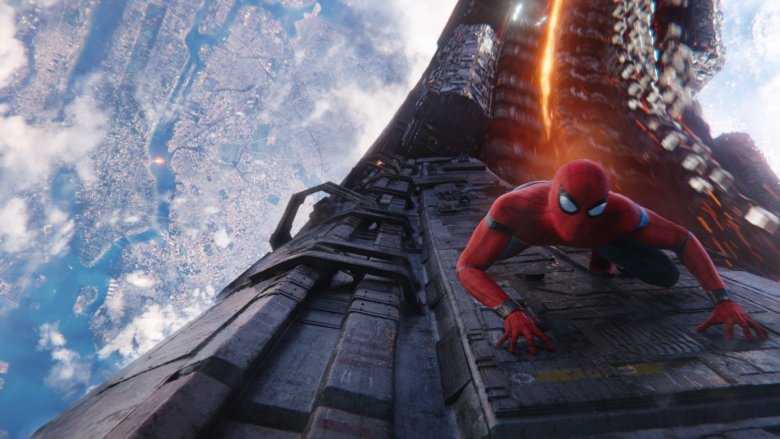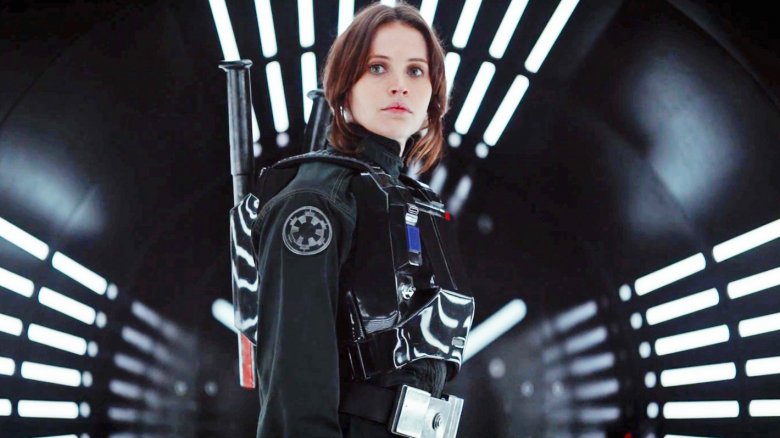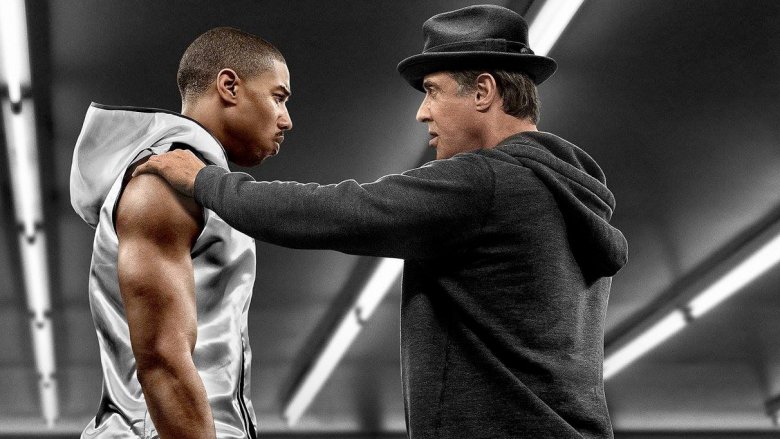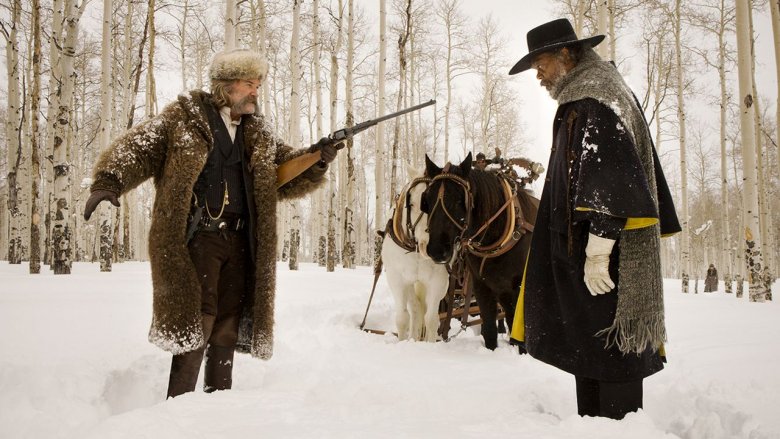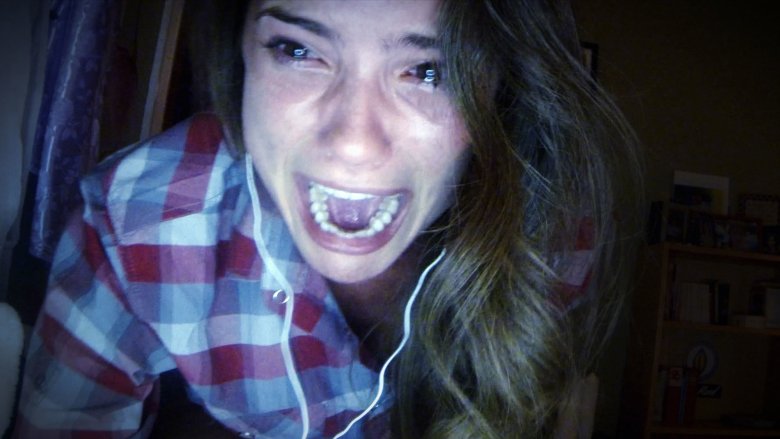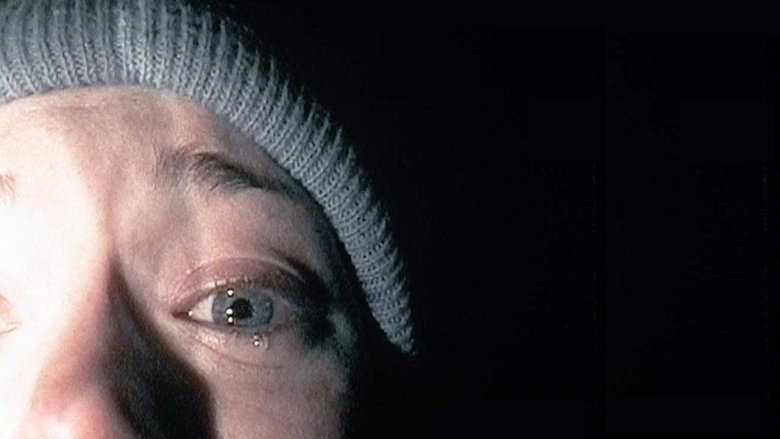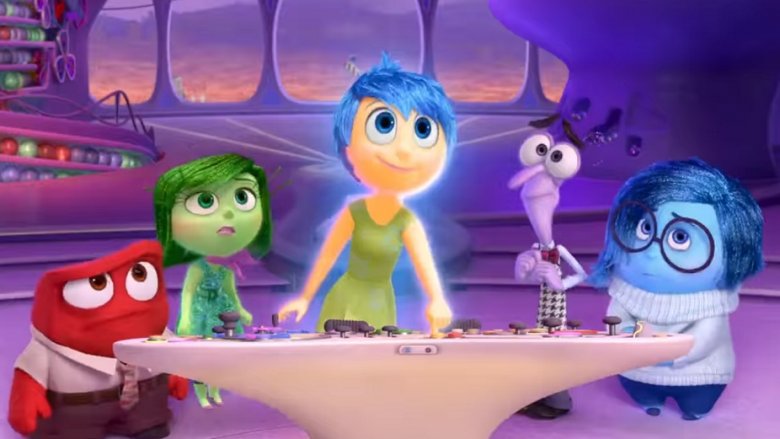Movies Best Watched In The Comfort Of Your Own Home
We currently have more options for entertainment at home than ever before, but in general, the theater is still often the best way to see a movie for the first time. Sitting in a dark room with a bunch of strangers who are reacting to the same experience you're having can enhance the most thrilling, dramatic, or moving aspects of a film, and of course there's the allure of the big screen and booming soundtrack — both things which, try as they might, home theater systems will never be able to truly replicate.
But there are quite a few films which seem almost designed for a home viewing experience, for myriad reasons. Whether it's some quality of the picture itself, the soundtrack, the length, or another combination of factors, these are films that — despite enjoying profitable, and in some cases massive, cinematic runs — are really best enjoyed in the comfort of your own home.
A Quiet Place
John Krasinski's A Quiet Place is a mightily effective thriller which completely lived up to its title. It's the story of a family struggling to survive in a post-apocalyptic landscape infested with vicious (but blind) alien monsters who hunt using sound, meaning that their major challenge in daily life is to remain completely silent. The film milks this premise for loads of tension and suspense, such as in the scene where the family matriarch (Emily Blunt) must give birth in a bathtub in dead silence — but when viewing the film in a theater, it quickly becomes apparent that the characters' problem is ours as well.
The near-total lack of a soundtrack makes A Quiet Place a rather uncomfortable communal viewing experience. Opening a box of Raisinets, munching on some popcorn, shifting slightly in your seat — every single sound you make will seem amplified, and it's easy to sense everybody else in the theater trying as hard as they can to keep from making the slightest bit of noise. And if you happen to have a cold, or a slight case of gas, your viewing will be not so much uncomfortable as mortifying. A Quiet Place is a great movie, but it's much easier to take in the experience at home, where you can munch and sneeze to your heart's content without worrying about bothering anybody.
Don't Breathe
Don't Breathe is another fantastic thriller with a title that seems more like a mandate for theater viewing. The second feature from director Fede Alvarez (The Evil Dead) tells the story of a group of young hoodlums who break into the house of a blind war veteran in search of a rumored safe full of loot — only to have the tables violently turned on them when their mark turns out to not be nearly as helpless as he seems. The trio spend a great deal of the film trying to be as quiet as humanly possible, meaning that you'll be doing the same thing in a theater full of people — but there are a couple of other notable aspects of Don't Breathe which make it ideal for home viewing.
First, this is a very dark film in terms of its lighting palette, and it isn't always easy to make out what's going on — a problem which can easily be remedied by turning up the brightness on your home screen. Also, most of the action takes place within the cramped confines of the target's house, lending the film its stiflingly claustrophobic vibe — an aesthetic which is not exactly enhanced by big-screen viewing. Don't Breathe made big bucks at the box office due to its ingenious premise and marketing campaign, but horror fans should make it a regular part of their home viewing — it's on the small screen where the film really shines.
Halloween
John Carpenter's genre-establishing classic Halloween had an absolutely legendary theatrical run, going from a single small market to eventual wide release by virtue of word of mouth and little else. Most of this word of mouth consisted of moviegoers breathlessly regaling their friends with stories of entire theaters full of people leaping out of their seats shrieking in terror, but by now, the tropes Halloween established are well-worn. An arthouse theater viewing today would probably feature more appreciative mumbles from the audience than blood-curdling screams, but there's an even better reason why the film is best-suited for viewing at home.
Namely: to watch Halloween alone, in the dark, on a decent television is to truly reveal its power. Carpenter, like Alfred Hitchcock before him, enjoys playing his audience like a piano — and Halloween's creeping sense of dread and steadily increasing tension will get right under your skin in these conditions. Also, the film is a master class in atmosphere, lighting, foreground and background composition, effective use of the soundtrack, and virtually every other aspect of filmmaking. It's like a little piece of film school in your own home, so if you're not the type to turn out the lights and let Carpenter's masterpiece have its way with the fear center of your brain, you can keep the lights on and take notes.
Avengers: Infinity War
It may seem counterintuitive, but there are several excellent reasons why Avengers: Infinity War — the biggest spectacle film of 2018, and the fourth-biggest box office moneymaker of all time — yields a richer viewing experience at home. First, watching the film on the big screen can be taxing if you're the type who likes to catch all the little details. There's simply so much going on onscreen, practically all the time, that you'll find yourself whipping your head back and forth like a referee at a tennis match during its more intense sequences. At home, you can actually take in the entire screen at once, rendering such scenes as the thrilling battle on Titan or the Avengers' last stand in Wakanda quite a bit easier to process.
On a similar note, the film is packed to the brim with callbacks and Easter eggs, which are much easier to pick out on the small screen — and when you have the ability to rewind. But perhaps the best reason to view Infinity War at home is the most practical: it's really, really long. The film is the culmination of ten years and 20 films' worth of Marvel Studios storytelling, and fans won't want to miss a single second; unfortunately, you can't pause the cinema to go to the bathroom.
Rogue One: A Star Wars Story
Rogue One: A Star Wars Story was the first Star Wars film to break from tradition by telling its own self-contained tale apart from the chronology of the main series. It's the story of the ragtag band of rebels who sacrificed everything — quite literally — to get their hands on the plans for the fabled Death Star, a suicide mission which would eventually enable Luke Skywalker and the rebels to triumph over the forces of the Empire and destroy the Death Star at the battle of Yavin IV. There are plenty of aerial battles and cinematic action — but there's also a lot of plotting and maneuvering, and the film lets action take a back seat to character development to a greater degree than any other Star Wars movie.
In fact, Rogue One almost plays like a two-hour pilot for a Star Wars TV series, so heavily does it focus on plot and character. For this reason, a theatrical viewing can seem dry and even a bit boring, especially for viewers accustomed to heaps of spectacle. On the small screen, the film's television-like pacing and plotting seems a lot more appropriate — and even the final, thrilling action sequence lands with a lot more power due to the close quarters in which it takes place.
Creed
2006's Rocky Balboa seemed like a fitting swan song for the series, with Sylvester Stallone coming back for one more round to write, direct and star in a story that closely mirrors the character's arc from the original film. The picture was well-received critically and was a box office success, but there didn't appear to be anywhere else for Rocky's story to go — until up-and-coming writer/director Ryan Coogler and his muse, acting powerhouse Michael B. Jordan, reinvigorated the franchise with 2015's Creed. In this spinoff, Rocky returns to train Adonis "Donnie" Johnson, the troubled son of late nemesis-turned-friend Apollo Creed, in the ways of the sweet science — but like most Rocky films, Creed is not so much a boxing movie as an intense character study.
Stallone's acting chops have always been underrated, and the presence of such formidable talents as Coogler and Jordan brought out a performance for the ages. He was nominated for a Best Supporting Actor Oscar for the film — his first nomination since the original Rocky — and Jordan is startlingly assured in the lead. It's a simple case in which the big screen adds very little to the film; it's all about the story and performances, and even Coogler's kinetic, masterfully edited fight sequences seem to telegraph more power on the small screen.
The Hateful Eight
Quentin Tarantino's deconstructed Western The Hateful Eight was a must-see in the theater, but only if you had the means to catch the 70mm "Roadshow" version and are a strident film buff. The old-school format — with its fine-grained texture and visible imperfections in the film stock — was the perfect accompaniment to Tarantino's throwback style of direction. But if you were forced to catch the standard theatrical presentation, you may very well have left the theater wondering why you didn't just wait for the home release.
There are several reasons for this. Although a handful of early scenes are sweepingly cinematic, most of the action (including the infamous opening scene with Christoph Waltz as a Nazi interrogating a man harboring Jews, and most of the film's back half) takes place in close quarters. The A.V. Club's Ignatiy Vishnevestky even opined (in a positive review) that the film could have been a stage play, which doesn't imply a terribly cinematic experience. But like Infinity War, The Hateful Eight is best-suited for home viewing for that most practical of reasons: it's over three hours long, which is why the "Roadshow" version was the only film in recent memory to feature an intermission.
Unfriended
2014's Unfriended was a sleeper horror hit with a ridiculous title and an ingenious premise: during the course of one night, a group of friends chatting with each other online appear to receive messages from a dead acquaintance whose suicide was the result of bullying in which they'd all had a hand. As they try to get to the bottom of who's sending the messages, things start to get even weirder and more inexplicable — until one by one, they begin to meet horrifying ends at the hands of an unseen assailant.
The film's aesthetic is supremely unique — it somehow managed to find a new angle on the found-footage genre by presenting the entire night's proceedings, in real time, as they play out on the laptop screen of ostensible protagonist Blaire (Shelley Hennig). But the same device which helps make the picture so effective also robs it of any additional power the big screen might have imparted to it; it practically seems like it was meant to be watched at home, and with all of the action taking place within the confines of a computer screen, the best way to watch Unfriended for maximum effect might be on an actual laptop. The film is perhaps the least well-served by the big screen of any movie ever made — with one possible exception.
The Blair Witch Project
1999's The Blair Witch Project was the kind of cinematic game-changer that comes along perhaps once every generation. It was one of the very first films to be promoted primarily on the internet, it had a tremendously successful viral marketing campaign, and — while it wasn't the first to employ the device — it brought the concept of the found-footage picture screaming into the popular consciousness. It was an absolutely massive hit, raking in nearly a quarter-billion dollars on a piddly $60,000 budget, and those early theater screenings — during which most audiences had no idea whether what they were seeing was real or not — could certainly get intense.
Unfortunately, they could also get physically difficult to sit through. Blair Witch was the first feature to be shot on consumer-grade home video, and all of the medium's many flaws were glaringly apparent on the screen; also, the constantly moving, jiggling hand-held camera caused many viewers to experience literal motion sickness, with reports of some vomiting right there in the theater. On top of this, the film's aspect ratio was a poor fit for the big screen — but of course, all of these qualities only added to its mystique. During its theatrical run it was an event, but on the small screen, it's much easier to take in, and to recognize it for what it is: one of the most daringly crafted, scariest films of all time.
Inside Out
Beloved animation studio Pixar is well-known for being seemingly incapable of making anything less than a great film, but among its mostly unimpeachable catalog, 2016's Inside Out stands out as one of its most lovingly executed, heartfelt, and entertaining works. It's the story of a young girl named Riley who must deal with a cross-country move with the help of her emotions — Anger, Disgust, Joy, Fear and Sadness — which are physically represented as sentient beings whose only job is to keep Riley running smoothly. But the unexpectedly traumatic experience causes things to go quickly awry, and Joy and Sadness are thrust into an urgent situation in which Riley's very well-being is profoundly endangered.
There are a lot of good reasons to take in Inside Out at home. Pixar's characteristically lavish animation and color schemes, gorgeous as they are on the big screen, are a little less overwhelming on the tube; the film's whip-crack plotting and pacing might also leave some viewers — especially younger ones — behind during a theater viewing. But if there's one overriding reason to catch Inside Out on the small screen, it's this: the film tugs at viewers' heartstrings more mercilessly than any Pixar film without Toy Story in the title, and it will break you down. That is to say, you will cry watching Inside Out — a lot. If you're self-conscious about that kind of thing, it's best to let the film work its magic in the privacy of your home.
